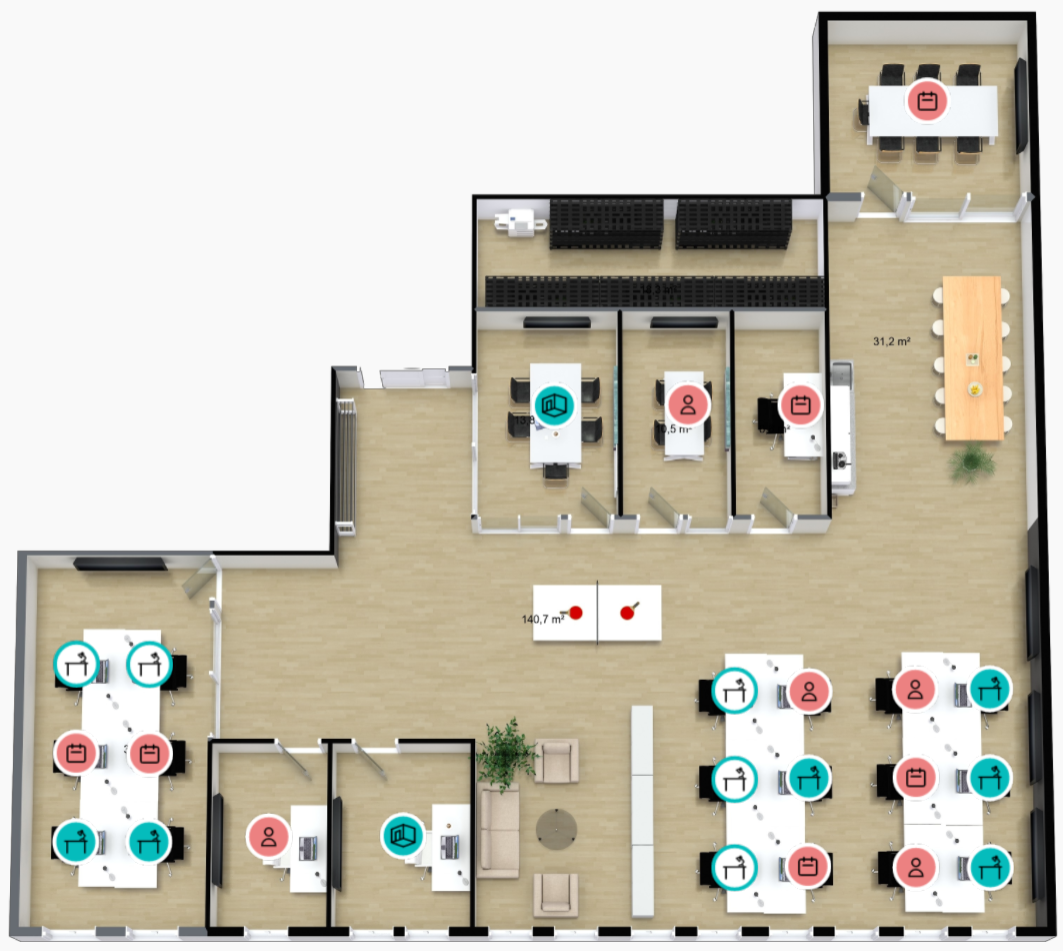Implementing desk booking in the workplace? Here are some tips!
Companies are realizing that the need for assigned seating may no longer be necessary as employees often spend 2 days at home and 3 days in the office. At the same time, companies want to maximize space utilization to reduce costs associated with energy, square meter rent, and IT equipment. The larger the company, the greater the need for a seat booking system.
Here are some tips you can take to ensure success:
-
Thoroughly understand how employees work: Having a comprehensive understanding of how different departments operate and utilize workspaces is crucial to finding an effective solution. Some departments have specific needs regarding their work environment, acoustics, and proximity to colleagues within their own team. Other teams may require numerous meeting rooms and quiet spaces, with a preference for easy accessibility. By consulting with employees and various teams, you can gain insights into their needs. Ask them to describe a typical workweek. Some companies have found that employees may be hesitant about "free seating," making it even more important for the implemented system to provide a positive experience.
-
Provide easily accessible information for employees: It's almost expected that employees want to have access to information about available seats and meeting rooms on their mobile phones or PCs. However, expanding this accessibility across multiple platforms can be advantageous. Consider utilizing information screens or digital signage to display real-time availability. This allows employees who may have forgotten to book a seat in advance or prefer not to book several days ahead to easily view and reserve seating.
-
Consider the value of sensor technology: This aspect is often overlooked when implementing seat booking systems.

For example: Imagine you have 350 employees in a building in Oslo. If 20% of those who book a seat do not show up, the booking system still shows those seats as occupied. This discrepancy can lead to frustration among employees and management, particularly if there's a shortage of seats relative to the number of employees. Using sensors offers several benefits:
- Automatic booking: Employees can seamlessly occupy available seats without manual input, as sensors and the booking system automatically generate bookings.
- Elimination of ghost bookings: If an employee fails to show up for a booked seat within a specified timeframe (e.g., 30 or 45 minutes), the sensors and system release the booking, making the space available for others.
- Real-time overview: Sensors provide a live view of seat availability, facilitating efficient space utilization.
- Usage data: Sensor data provides valuable insights into capacity utilization, peak office hours, departmental presence, and more, aiding informed decision-making regarding premises investment and layout adjustments.

-
Prioritize user experience: A user-friendly system is essential for encouraging employee adoption. Streamlined processes with minimal steps or clicks for booking seats ensure ease of use. Booking seats should become a habitual part of employees' routines. When selecting a system, prioritize simplicity in overview, booking, and login processes to enhance user experience.

-
Develop a robust communication plan and onboarding process: Introducing a booking system may face initial resistance from employees, particularly regarding free seating arrangements. Therefore, comprehensive communication and onboarding procedures are essential. Address potential concerns related to GDPR compliance, implementation procedures, and adherence to guidelines.
Would you like to learn more? Contact us today.